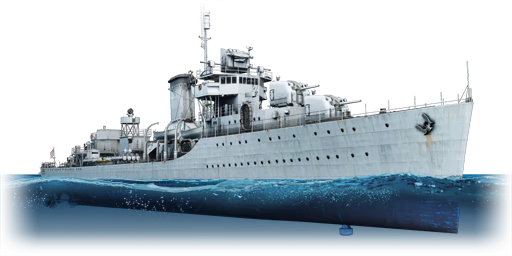The USS Bagley (DD-386), the lead ship of her class, was named in honour of Worth Bagley, the only U.S. naval officer killed during the Spanish--American War. Launched in September 1936 and commissioned in June 1937, she operated off the U.S. west coast before serving extensively in the Pacific during the Second World War. At Pearl Harbor in December 1941, she was among the first ships to open fire during the Japanese attack, engaging and downing multiple enemy aircraft. Throughout the war, Bagley participated in key campaigns, including the Guadalcanal landings in August 1942 and the Battle of Savo Island, where her torpedoes inadvertently struck HMAS Canberra in a friendly-fire incident. She provided escort and shore bombardment support during operations in New Guinea and New Britain in 1943 and later took part in major campaigns, such as the Mariana Islands, Leyte Gulf, Iwo Jima, and Okinawa from 1944 to 1945. Following Japan's surrender in August 1945, Bagley assisted with occupation duties before returning to the United States. She was decommissioned in June 1946 and sold for scrap in September 1947.
Introduced in Update "Firebirds" in her 1941 configuration, USS Bagley (DD-386) is similar to USS Aylwin, but trades superior anti-aircraft armament for a higher number of torpedoes. She has survivability comparable to other US destroyers and is equipped with excellent 5-inch main guns armed with HE-VT shells. However, she lacks radar to fully utilise this capability. Her role is more suited to torpedo support, with two launchers containing four relatively effective torpedoes on each side of the aft superstructure. While she may struggle with survivability against higher BR vessels, she remains a capable combatant against her peers, often able to win duels against many of her direct counterparts.














